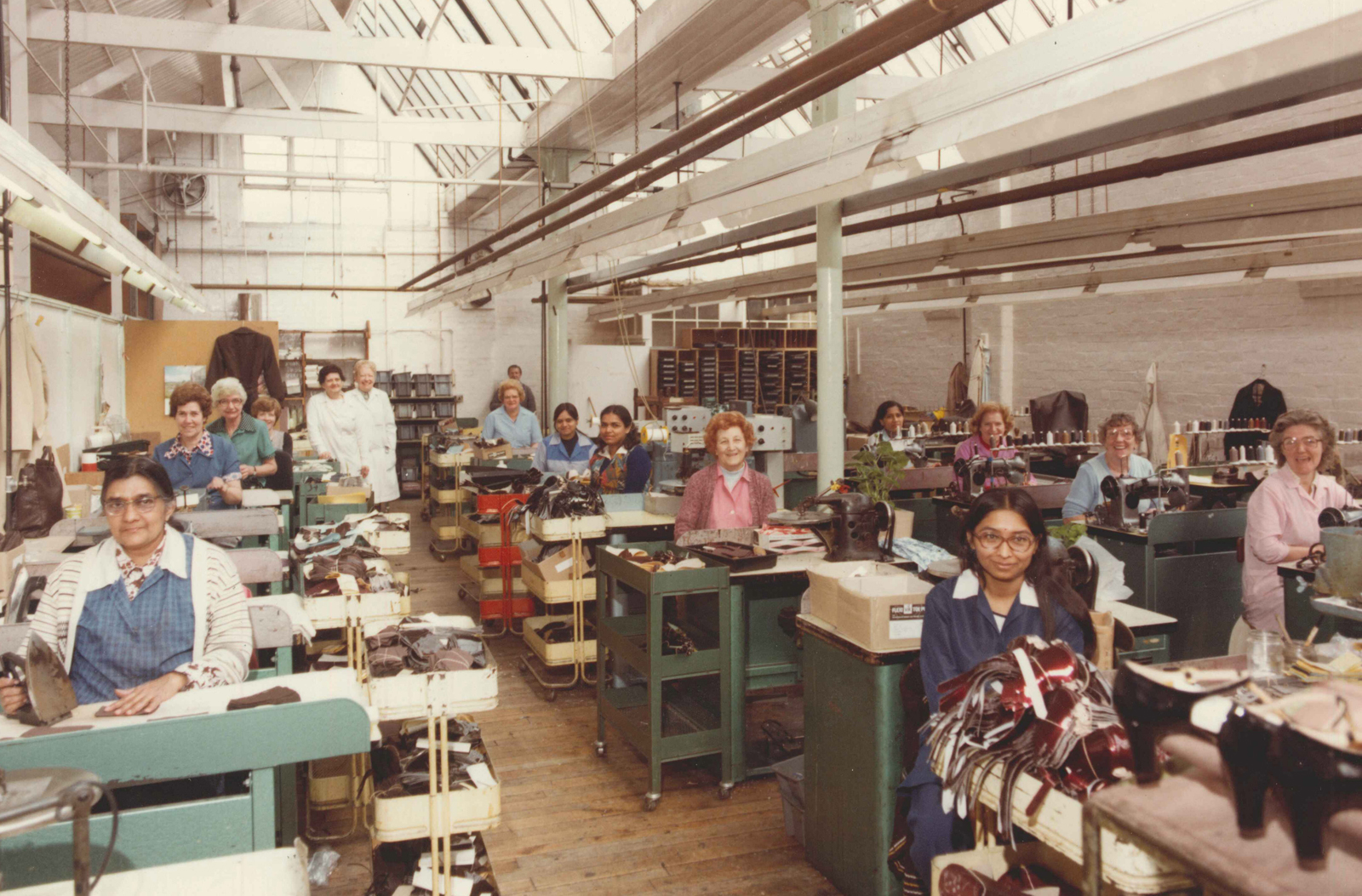A New Way of Living
The 1960s saw the post war baby-boom generation come of age, complete with new expectations and aims for life. Previous decades had seen the controls and rationing of wartime Britain gradually removed.
Prosperity increased and people were able to buy an expanding range of consumer goods. Televisions, washing machines, cars and many other goods, previously unavailable or unaffordable to a large part of the population, were being bought to improve the lifestyle of families.
People's houses were also being improved. Council houses and private houses were built to house the growing population and replace war damaged properties or poor quality slum dwellings. Former luxuries such as telephones and central heating became common in the average house and changed the way people lived. For the knitting industry, warmer, centrally heated houses meant that people did not need to wear heavy clothes to keep warm at home.

Shoe factory workers in Leicester
Jobs for the world
The influence of overseas cultures also began to have a major impact on lifestyles. Cheaper travel made it possible for people to holiday abroad and experience the way peoples from other cultures and civilisations lived, ate and dressed. Cultural influences also entered Britain with people from across the world and the Commonwealth settling in the UK. The economic boom in the '50s and '60s created labour shortages. To overcome this, employers looked to Commonwealth countries where unemployment was high and opportunities were limited. As a result of the campaign to recruit people, residents arrived from India, Pakistan, East Africa, and the Caribbean. Leicester offered job opportunities in the knitting, shoe and associated industries and became a popular centre for settlers in the East Midlands. Between 1951 and 1971, Leicester's population of residents from the Commonwealth increased from 1,500 to 26,419.
Swinging minis
In addition to technological changes, moral and social codes continued to relax. The young adult population took advantage of the change in attitudes and enjoyed the 'swinging sixties'. The availability of family planning meant that people were older when they started families. This created a larger proportion of the British population without family commitments and a higher disposable income to spend on more extravagant items. The development of a 'pop culture' saw a number of fashions come and go, from the Beatles to punk.
Some of these changes brought benefits to the hosiery and knitwear industry. Mini skirts brought about a demand for stylish stockings to wear with them. Brightly coloured designs, elaborate patterns and fishnets were all supplied by the industry to meet the demand. The 'flower power' culture and 'hippies' sought to associate more closely with nature. Long hair, loose clothes, sleeveless coats and boots came into fashion. In the 1980s casual sportswear became popular fashion, items with designer labels and brands were bought as soon as they could be afforded.
Developments in knitting technology provided new garments and looks. The late 1960s introduced tights, which removed the need for suspenders to hold up the stocking. Early examples were produced by sewing two stocking legs to a pair of pants. A body knitted in the same fabric as the legs subsequently replaced the pants.